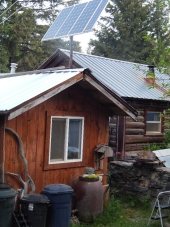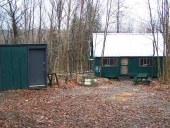posted 11 years ago
well sir, i have been in the hydro trade for 30 years (hydrowest). turbines and generators were very expensive and the old timers were very smart; i sincerely doubt that they would have made such a big error in turbine selection at your plant. in my desk drawer is Leffel bulletin #54 from 1916; so, let me see---ah, here it is---for the 36Z, at 7 feet of head, you should make 112hp at 110.5 rpm while passing 173.67 cfs of water. so you are right, there is a mis-match between your turbines and generators at 7' of head. But: at 13' of head, the 36Z's make 294 hp at 150 rpm while passing 240cfs of water (a perfect match). i think your problem is that your dam used to have 6' high flash boards. replace the flashboards and everything will be correct. check the dam crest, a 6 pack of bridal veil pale ale says there is a pipe socket every 2 or 3 feet for the flashboards.
if the wicket gates were closed, i think you will be suprised by how little corrosion there will be on your Leffel runners. i have dealt with many old hydro plants and rust is usually not the problem you would expect it to be. you probably cannot run with your dc idea as the turbine runner is held up by a big Kingsbury bearing that is integral to the generator. replacing the kingsbury with something different is a great difficulty.
best regards, eric

 1
1




 1
1




















 1
1




























 1
1
















